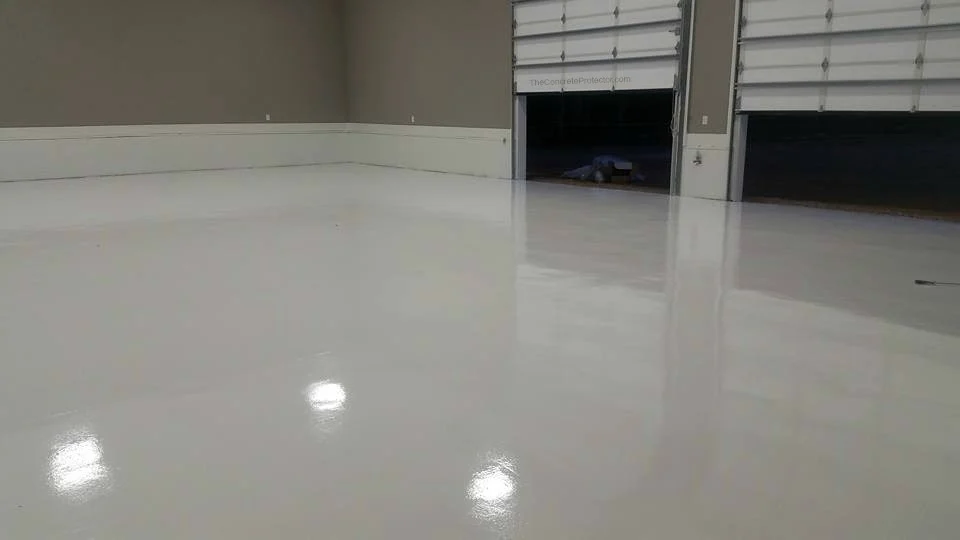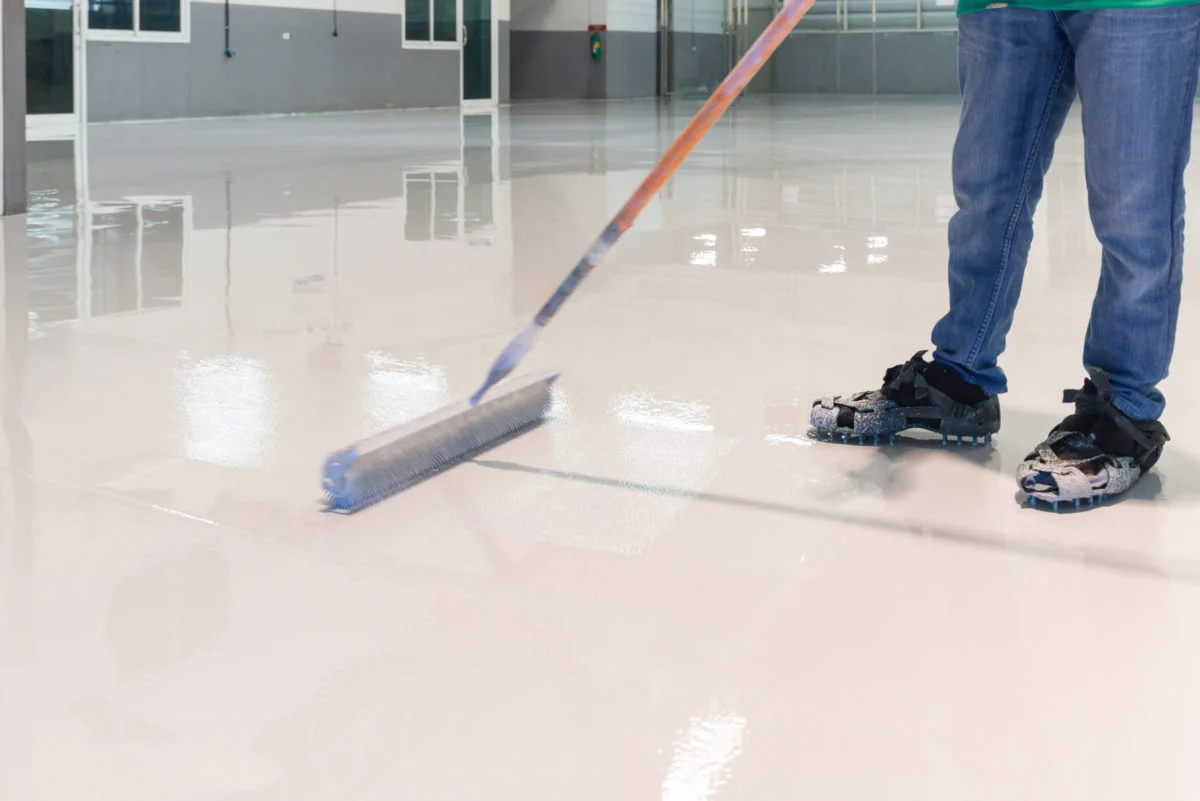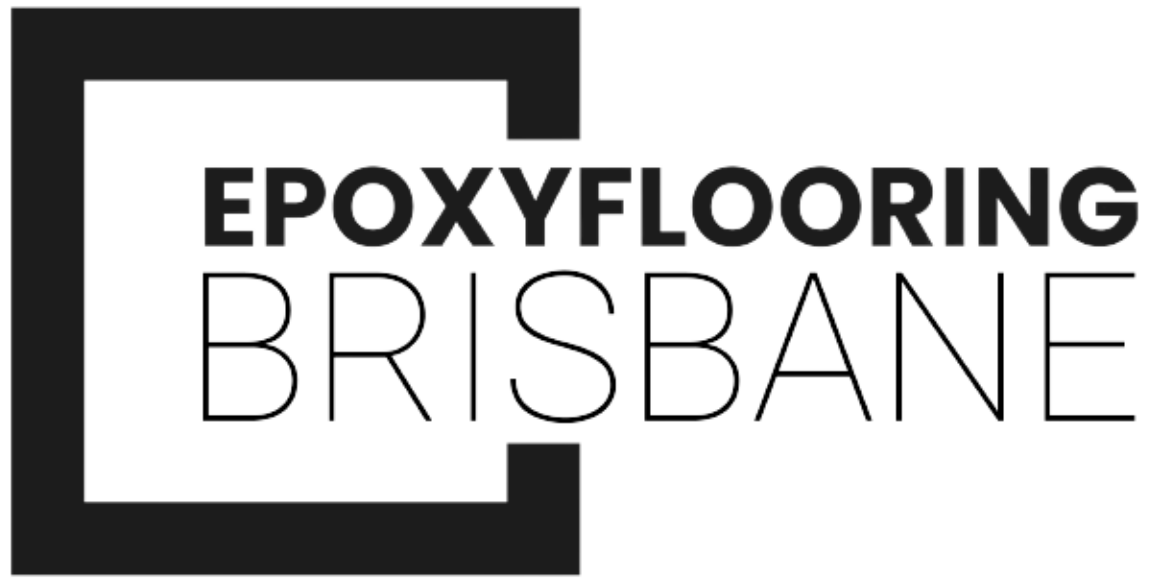
When applying epoxy flooring, avoiding common mistakes is crucial to achieving a durable and aesthetically pleasing result.
Whether you’re working on garage epoxy flooring, driveway resurfacing, or commercial concrete coatings, understanding these pitfalls can save you time, money, and effort.
This article will guide you through the most frequent epoxy flooring mistakes, providing practical advice to help ensure your project’s success.
Table of Contents

Epoxy flooring mistakes can lead to costly repairs and disappointing results. This article discusses how to avoid these mistakes, focusing on Brisbane’s unique climate and conditions. By adhering to best practices, you can ensure a long lasting and attractive epoxy floor.
Brisbane’s subtropical climate makes temperature and humidity significant factors when applying epoxy flooring. Epoxy cures through a chemical reaction that can be affected by these environmental conditions.
If it’s too hot, the epoxy may cure too quickly, leading to bubbles, uneven texture, or a weakened bond. Conversely, cold conditions can slow down the curing process, making the floor more susceptible to dust and other contaminants.
The ideal temperature for applying epoxy in Brisbane is between 15°C and 25°C, with humidity levels below 85%. High humidity can introduce moisture into the mix, causing cloudiness or poor adhesion. Use dehumidifiers and maintain proper ventilation during application to manage these conditions effectively.
Surface preparation is arguably the most critical step in applying epoxy flooring. A well prepared surface ensures proper adhesion and a smooth finish. Unfortunately, this step is often rushed or inadequately performed, leading to peeling, cracking, or bubbling of the epoxy.
For garage epoxy flooring or driveway resurfacing, start by thoroughly cleaning the concrete to remove any oils, grease, or debris. A power washer can be effective for this. Next, inspect the surface for any cracks or holes and fill them using a suitable filler.
Grinding or acid etching the concrete will help create a rough texture, allowing the epoxy to bond more securely. In commercial settings, where foot traffic is heavy, ensuring the surface is entirely clean and free from contaminants is even more vital.
Moisture is a significant enemy of epoxy flooring. Brisbane’s occasional heavy rains can increase moisture levels in concrete, which can later cause the epoxy to lift or bubble. Even if the surface feels dry, residual moisture within the concrete can still affect the final outcome.
To avoid this, test the moisture levels of the concrete before application. You can use a moisture meter or conduct a simple plastic sheet test—tape a plastic sheet to the floor for 24 hours and check for condensation. If moisture is present, use a moisture barrier or a vapour barrier epoxy primer to seal the concrete before applying the topcoat.
One common mistake is spreading the epoxy too thin to cover more area, leading to an uneven finish that wears out quickly. Epoxy should be applied generously to achieve the desired thickness and durability, especially in high traffic areas like commercial floors or driveways.
To ensure proper coverage, calculate the square footage of the area and purchase enough epoxy to cover it adequately. Generally, you’ll need about 0.4 to 0.6 litres of mixed epoxy per square metre for a single coat. Applying two coats will provide a more robust and durable finish.
Incorrectly mixing epoxy can result in air bubbles, inconsistent curing, and a weaker finish. Epoxy consists of two components: resin and hardener, which must be mixed in the correct ratio. Even a slight deviation can impact the chemical reaction, leading to problems.
Mix the components thoroughly for at least 3-5 minutes, scraping the sides and bottom of the container to ensure all the resin and hardener are incorporated. Avoid introducing air into the mix by stirring gently. Once mixed, the epoxy should be used immediately, as it will begin to harden within a limited time, especially in Brisbane’s warmer temperatures.

Selecting the right epoxy flooring contractor can make all the difference. Here are five reasons why our services stand out in Brisbane:
For more information or to request a free quote, contact us today. Let us help you transform your space with top quality epoxy flooring.
The best temperature for applying epoxy flooring is between 15°C and 25°C. This range allows for proper curing without the risk of defects.
Ensure the surface is clean, dry, and free of any contaminants. Conducting a simple water drop test—if water absorbs into the concrete, it’s ready for epoxy.
Moisture can cause the epoxy to bubble, lift, or fail to adhere properly. Always check for moisture levels before application.
A standard coat should be about 0.4 to 0.6 litres per square metre. Applying two coats is recommended for enhanced durability.
No, epoxy should be mixed just before application. Once mixed, it has a limited pot life and should be applied immediately.
Essential tools include a power washer, grinder, epoxy mixer, squeegee, roller, and a dehumidifier for managing humidity.
Typically, epoxy flooring takes 24 to 48 hours to cure to a walkable state, but full curing can take up to 7 days.
| M | T | W | T | F | S | S |
|---|---|---|---|---|---|---|
| 1 | 2 | 3 | 4 | |||
| 5 | 6 | 7 | 8 | 9 | 10 | 11 |
| 12 | 13 | 14 | 15 | 16 | 17 | 18 |
| 19 | 20 | 21 | 22 | 23 | 24 | 25 |
| 26 | 27 | 28 | 29 | 30 | 31 | |

Trusted, experienced & professional plasterers. New builds, renovations, commercial plastering and repairs. Licenced & insured. Contact us for a free quote!